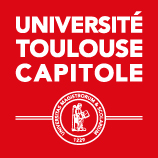- Recherche,
Group decision and negotiation, série de conférences en anglais du Professeur Marc Kilgour
du 20 mai 2015 au 19 juin 2015
Série de conférences du Professeur Marc Kilgour, organisé en collaboration avec l'équipe SMAC de l'IRIT-UT1
Conference 1: Graph Model for Conflict Resolution
Mercredi 20 Mai
The Graph Model for Conflict Resolution: Past, Present, and Future (2 hours)
Conflict Analysis is a set of principles and techniques to model and analyze strategic conflicts, or multi-person, multi-objective decision problems. These game-theory-related techniques are all based on the principle that actors are purposive. Among them, the Graph Model for Conflict Resolution stands out for the simplicity and flexibility of its models and the breadth of its analysis. This presentation shows the remarkable development of the Graph Model since its first publication in 1987.
The graph model system is prescriptive, aiming to provide a specific decision-maker with useful strategic insights. The basics of the Graph Model are described in detail, using real-life conflicts as illustrations. Then more recent developments are discussed, including
· added flexibility in modeling, including multi-level preference and uncertain, fuzzy, and
grey preference,
· new analysis techniques using matrix methods,
· the development of post-analysis procedures, including coalition analysis and status quo analysis
· Inverse GMCR, a procedure that can advise disputants and mediators.
The newest Decision Support System, GMCR+, with its strong visualization components, will be used to illustrate these ideas. A brief look to the future will show that the next generation of decision support based on the Graph Model will be even more comprehensive and even more powerful.
Vendredi 22 Mai
Applications of Model for Conflict Resolution (2 hours)
Conference 2: Fair Division
Mardi 2 Juin
Fair Division: Old and New (2 hours)
Often, group decision and negotiation can be broken down into two processes:
· helping the parties share some information about their preferences, and then
· using this information to find a “fair” allocation.
But what makes an allocation fair? One fairness criterion is envy-freeness: An allocation is envy-free if each participant feels that his or her portion is at least tied for best – and therefore does not envy anyone else. With such a criterion in mind, then we can ask how to use information about preferences to find a fair allocation. Is it always possible? Can the parties do it themselves, or is a central authority necessary?
A prototype procedure for fair division between two persons is “I Cut, You Choose,” (ICYC) for splitting a divisible (continuous) good between two people. ICYC is assessed, and various improvements and extensions introduced. ICYC also lies at the heart of some new procedures for the allocation of indivisible items, particularly in situations with very limited information about preferences. One special case has been identified in which there is an elegant, easy-to-compute solution.
Fair division algorithms and principles are related in a fundamental way to procedural approaches to allocation and interest negotiation, and can be applied to problems in economics, computer science, operations research, management, and politics.
Conference 3: Voting Procedures
Mardi 16 Juin
An Overview of Voting and Elections (2 hours)
Voting, a commonly used group-decision process, usually aims to aggregate decision recommendations in a way that is appropriate and balanced. The “cornerstone of democracy” is the opportunity to vote in a free, fair, and open electoral system. In fact, a multitude of electoral systems has been proposed, most to choose a single winner (as in the election of a mayor, governor, or president), but some to determine multiple winners (as in the election of a committee).
Many desirable properties for group-decision procedures have been formulated. Looking at the mathematics behind the various electoral systems, we assess their abilities to achieve these properties. No system achieves them all, and it seems very unlikely that anything close to a perfect system will ever be invented. Thus the choice of a voting system seems to come down to tradeoffs, which themselves are difficult to assess. Yet there has been some progress toward making voting and elections, as group-decision processes, responsive, transparent, and fair.
Vendredi 19 Juin
Multi-Winner Elections Using Approval Balloting (2 hours)
Multi-winner elections are becoming more common, perhaps reflecting the ubiquity of the internet and the growing ability to handle massive datasets. Approval balloting is a natural choice for multi-winner elections, and many procedures based on it have been proposed, often adapted from single-winner election procedures. One interesting issue is the composition of the set of winners; in the simplest case (called FNW, or Fixed Number of Winners), the size of the winning subset is fixed in advance. Another possibility is a VNW (Variable Number of Winners) election, in which the voters themselves to determine how many win, as well as who wins.
A recent survey of procedures for multi-winner elections is reviewed. Then some properties applicable to FNW elections are discussed briefly. Finally, some possible axioms for VNW elections are proposed and shown to imply a new procedure.Ces conférences sont toutes données en anglais, sans traduction simultanée
